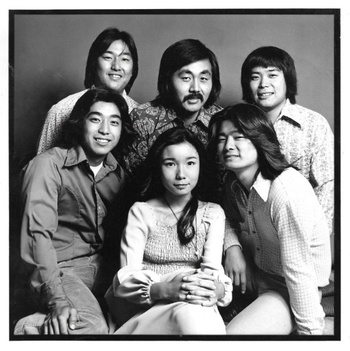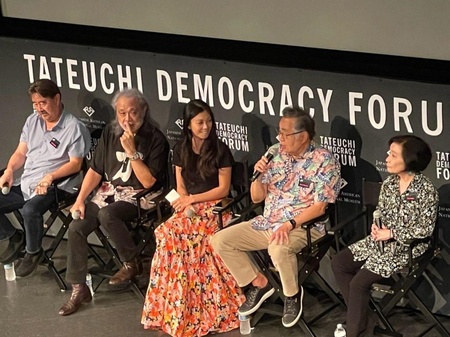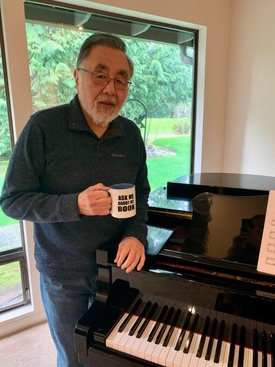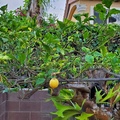The late 1960s until the early 1980s...what comes to mind? Perhaps the movies of the era are some of your favorite films of all time, or the rising activist movements of the ’70s are deeply engraved into your mind. One of the most popular responses would almost certainly be the music; Black Sabbath, Led Zeppelin, and The Rolling Stones are still highly well known to this day.
But was everyone aware of the small but strong Sansei rocker scene of the time? Harry Manaka strives to reflect on the Rocker nostalgia as well as bring greater awareness to the era with his book, Chronicles of a Sansei Rocker. It was written conveniently during the pandemic when he would have lots of time to reflect on his, as well as 40+ other Rockers’, experiences to get the most well rounded narrative possible.
When first beginning the writing process, Manaka envisioned an utterly different path for the book. Although he had wished to write a book for the longest time, he felt as if the book would only gather attention among other Asian Americans who had also lived during that era, with an exception for his grandkids and kids who would learn more about his early days. However, it was rather fortunate that his audience has become much wider than anticipated. He notes:
“Others told me that this is not a story limited to the Asian American market, it’s more of a ‘coming of age story’ for many ethnic groups. I was worried that my book would not sell, but, I’ve sold over 2,000 copies and counting.”
Since the Sansei rocker scene was quite an intimate and close knit space, not many bands were able to attract as much of a fanbase as mainstream ones, with the exception of Hiroshima. Many groups were simply high school or college kids trying to navigate their own identity away from their parents’, along with society’s expectations for them.

Decades later, however, such a close-knit community meant for Manaka with many phone calls, emails, and other forms of communication from people once involved now sharing their leftover memorabilia from the time, emphasizing the magical nostalgia and memories re-lived from reading Chronicles of a Sansei Rocker. As for the younger ones, an interest in the times is still visible. Although not so much an interest to actually recreate those times, Manaka offers his analysis:
“Now days, most young people do not have the patience or desire to learn how to play an instrument, spend time practicing with others, and form a band. There is more of a desire for instant gratification, such as what comes with playing video games, and other online activities.”
The time it takes to form a band and practice playing that is setting younger kids off from doing as their relatives once did is also a common misconception that many have about the Sansei Rocker Era, this misbelief even extending to all bands as a whole. Many of the Sansei Rocker groups were willingly made cover bands, meaning that they usually stuck to solely covering popular songs at the time to then recreate the song as perfectly identical as can be. To create the sound exactly, cover bands must put in as much effort, if not even more, as regular bands do to play music fitting to their liking—not all of the Rocker Era was fun and games for the band members themselves. Fortunately, competition for business among the hardest working bands was never too much of an issue according to Manaka.
Furthermore, despite the name given to the era implying it only catered to and was experienced by Japanese Americans, it seems as though, when put into the grand scheme of things, the opposite is true. Every group who is any group seemed to have at least one band member who was of non-Japanese ethnicity. People of European, Hispanic/Latino, African, and other non-Japanese Asian descent were all mixed into the Sansei Rocker Era, though it is undeniable that the majority of players and attendees were Asian American, likely as the congregation brought more comfort in a time of “subtle discrimination,” as Manaka puts it.

Once the restrictions the pandemic had put on large gatherings had leveled down, Manaka was able to bring fellow Rockers Tina Fujino, Gerald Ishibashi, and David Honjio for a one day only event titled Sansei Rocker Symposium, held on July 30, 2022, at the Japanese American National Museum’s Tateuchi Democracy Forum in Los Angeles. With in-person tickets selling out in less than 48 hours, the event was a huge success, again tremendously contradictory to Manaka’s initial expectations for the book. Viewing the event from a screen made no difference to the experience of the Symposium itself.

After hearing all of their different and similar opinions on questions asked by the audiences, as well as from the general conversations among the four fellow Rockers, it was nothing short of enlightening to grow aware of how different the Rocker era can be interpreted by notable members of it. Their views were especially contrastive when the extent to which competition among groups was prevailing was brought up.

Following the success of both Chronicles of a Sansei Rocker as well as Sansei Rocker Symposium, Harry Manaka is now working on Sansei Rocker - Behind the Curtain, “a semi-documentary of the different political, social, and societal issues that were going on back in the day, with a backdrop of live music being performed.” Excitingly, Manaka plans to go all out for this project, combining both recorded and live music on the stage from the greatest members in the industry. Additionally, further plans include using an intimate venue similar to the Tateuchi Democracy Forum used for Sansei Rocker Symposium and having an initial five-day run. Manaka concludes:
“I am deeply honored and humbled by the fact that so many people are interested in what I’m doing. I’ve been told by numerous parties that my book has been the catalyst for them reuniting with old friends and former classmates and has re-excited them about the possibility of re-living the fun they had during the Sansei Dance Party era. I’m, of course, thrilled that people feel this way, and hope to deliver products and experiences that will enhance this feeling.”
* * * * *
Watch the Sansei Rocker Symposium (July 30, 2022)
A panel of “Sansei rockers” discussed Harry Manaka’s book, Chronicles of a Sansei Rocker, which explores the dynamic Japanese American music and dance scene of the ’60s and ’70s. Tina Fujino, Gerald Ishibashi, David Honjio, and Harry Manaka reunited in a conversation about community, history, and rock music, moderated by actress Brittany Ishibashi.
Purchase Chronicles of a Sansei Rocker from the JANM Store >>
© 2022 Chiana Fujiwara






